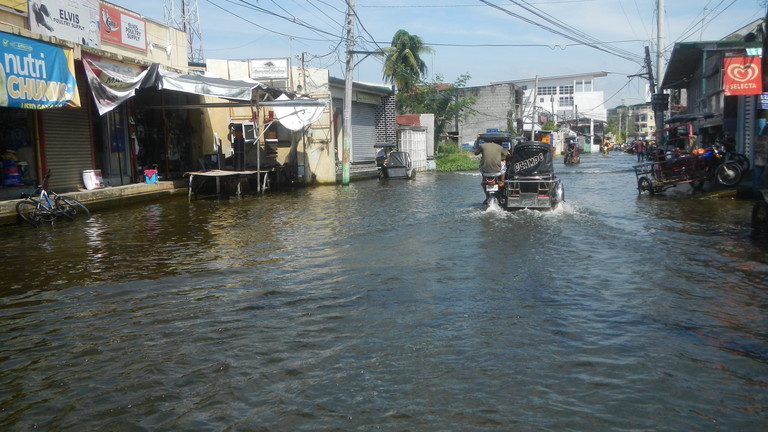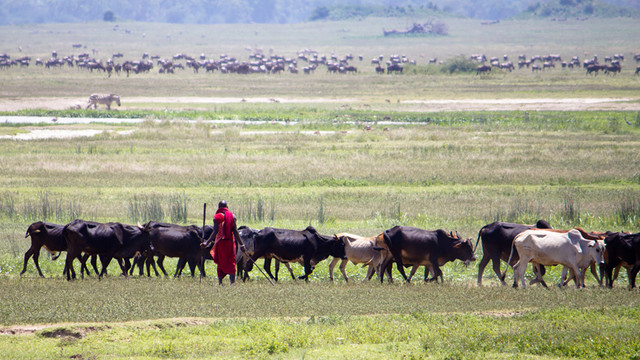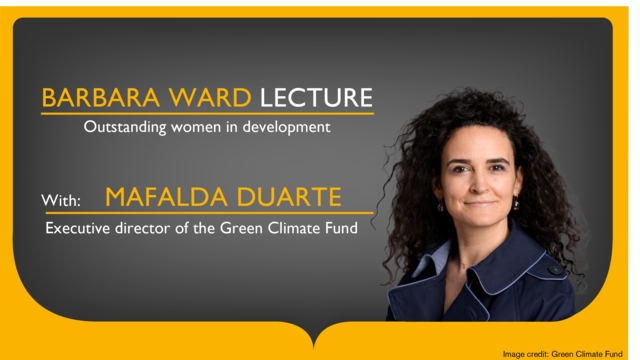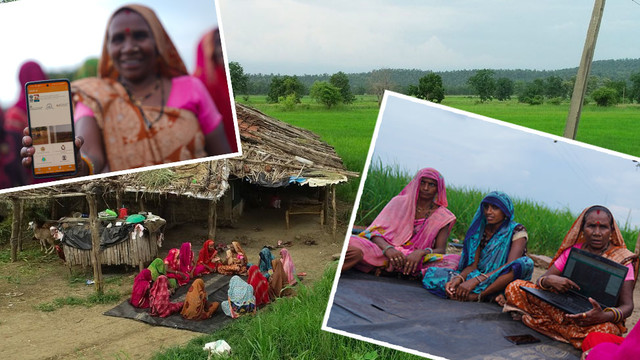On the road to COP27 and a new climate finance goal – next stop: Manila
Next week, technical experts will gather in Manila to discuss a new global goal for post-2025 climate finance. Illari Aragon explores the issues that will be critical at the talks.


Super typhoon Goni hit the Philippines in 2020, destroying homes, roads and crops. Total economic losses were estimated at US$400 million. (Photo: Judgefloro, CC0, via Wikimedia Commons, CC0 1.0)
One of the main outcomes of COP26 in November 2021 was to agree on the process to set a new collective quantified post-2025 goal for climate finance (NCQG), which will supersede the US$100 billion target set in 2009. This is the first goal on climate finance to be set multilaterally, as part of open, inclusive and transparent deliberations scheduled to conclude by 2024.
Less than three years to reach agreement is a short time. Climate finance is usually one of the most contentious topics in UNFCCC negotiations, and the NCQG will no doubt be among the most sensitive issues to resolve.
Deliberations on the NCQG kicked off in March 2022 with the first Technical Expert Dialogue (TED) in South Africa. The second TED took place in June alongside the 56th meeting of the subsidiary bodies in Bonn. Here I look at key issues to be covered at the upcoming third TED to be held in Manila from 6-9 September in anticipation of COP27 in Egypt.
Needs are the starting point
The amount of the new goal will require careful consideration. The $100bn figure was ambiguous by design and politically determined behind closed doors. In many ways, it was a symbolic figure that represented only a fraction of the climate finance needed by developing countries to address climate action.&
Unlike the $100bn, the post-2025 NCQG will be a negotiated goal, considering the needs and priorities of developing countries. It means the NCQG will be rooted in what developing countries identify as their needs and priorities in the face of the climate crisis.
However, understanding and estimating these needs is not that simple – it requires large quantities of data to be gathered and assessed.
A vital point of reference in that regard is the first-ever Needs Determination Report of developing countries, published by the Standing Committee on Finance (SCF) in October 2021. Based on information in Nationally Determined Contributions (NDCs) and other national reports, the SCF concluded that developing countries need $5.8-5.9 trillion up to 2030 to finance actions listed in their NDCs.
But the report also acknowledges acute data gaps. Owing to a lack of data and limited capacity, many national reports do not provide any cost estimates, so the real overall figure is likely to be much higher. This challenge is particularly evident for adaptation needs.
Better support, review mechanism and sub-goals
At the third TED, discussions on needs will have to be comprehensive. Delegates must look at ways to understand present needs and priorities of developing countries and determine how these can be quantified to inform NCQG deliberations. A related discussion must focus in particular on how support can be provided to developing countries to conduct needs assessments and estimations, particularly for countries with the most limited resources, such as the least developed countries (LDCs).
A better understanding of needs across the different types of climate action (adaptation, mitigation, loss and damage) could help to crystallise other critical issues such as the thematic scope of the goal, including the option to have sub-thematic goals for each, as opposed to having a single aggregate figure. The disparity in support between mitigation and adaptation was widely emphasised during the first and second TEDs. The Climate Policy Initiative’s Global Landscape on Climate Finance report, for example, shows that in 2019/20 only 7% of climate finance was allocated for adaptation, in contrast to 90% for mitigation. Delegates have highlighted the importance of balance, and allocations to sub-thematic goals could help correct this disproportion.
As global warming worsens, adaptation needs will increase too, so the NCQG should also be scalable. TED delegates must discuss if and how a review mechanism can be embedded in the NCQG to ensure it continues to reflect changing needs.
What counts?
When agreeing a post-2025 climate goal, it is crucial that countries move towards common understanding of the elements that count as climate finance in the context of the NCQG and how to count them, because different accounting methods can lead to radically different results.
For instance, the Organisation for Economic Co-operation and Development (OECD) estimated that climate finance reached $71.2bn in 2017 and $78.9bn in 2018, but using a different accounting approach, Oxfam offered a considerably bleaker estimate of just $19-22.5bn in ‘climate-specific net assistance’ being made available over the same period.
Delegates must therefore start to clarify exactly what counts towards the totals. For instance, Parties must decide conditions for the inclusion of loans and mobilised private finance, as well as grants, and how exactly loans should be counted: face value vs grant equivalent amount.
Clarity about what counts as ‘new and additional’ climate finance and the method to define the ‘climate specificity’ of contributions is also vital to prevent ambiguity and overestimation.
Removing the barriers to access
A consistent message during the first two TEDs was about the importance of enhancing access to climate finance – an issue everyone seemed to agree on. The NCQG presents an opportunity to build on the lessons learned from the $100bn and address barriers experienced by developing countries.
These challenges range from the process of accrediting national entities to different climate funds and cumbersome application requirements, to slow disbursement of climate finance, among others.
Deliberations at the third and fourth TEDs could address how the NCQG process can promote enhanced access. Creating minimum floors for groups of countries, simplifying access modalities for small-scale activities, fostering enabling environments to increase absorptive capacity and supporting capacity development for designing bankable projects are some of the ideas shared so far.
Moreover, access should not be understood just in terms of external access by governments: ultimately, the NCQG should enable access to climate finance by subnational governments, local communities and Indigenous Peoples, and be gender-responsive.


